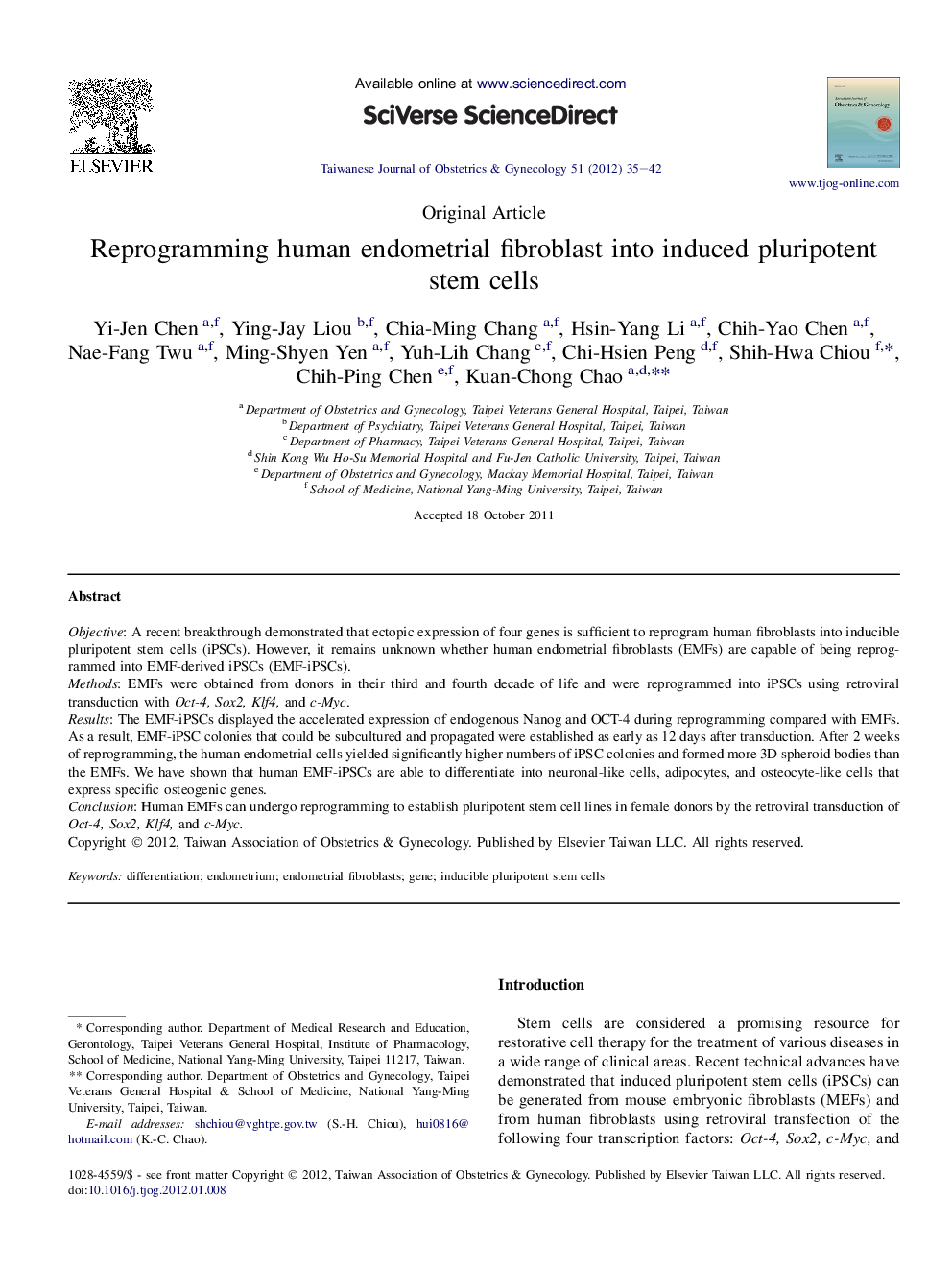| Article ID | Journal | Published Year | Pages | File Type |
|---|---|---|---|---|
| 3975317 | Taiwanese Journal of Obstetrics and Gynecology | 2012 | 8 Pages |
ObjectiveA recent breakthrough demonstrated that ectopic expression of four genes is sufficient to reprogram human fibroblasts into inducible pluripotent stem cells (iPSCs). However, it remains unknown whether human endometrial fibroblasts (EMFs) are capable of being reprogrammed into EMF-derived iPSCs (EMF-iPSCs).MethodsEMFs were obtained from donors in their third and fourth decade of life and were reprogrammed into iPSCs using retroviral transduction with Oct-4, Sox2, Klf4, and c-Myc.ResultsThe EMF-iPSCs displayed the accelerated expression of endogenous Nanog and OCT-4 during reprogramming compared with EMFs. As a result, EMF-iPSC colonies that could be subcultured and propagated were established as early as 12 days after transduction. After 2 weeks of reprogramming, the human endometrial cells yielded significantly higher numbers of iPSC colonies and formed more 3D spheroid bodies than the EMFs. We have shown that human EMF-iPSCs are able to differentiate into neuronal-like cells, adipocytes, and osteocyte-like cells that express specific osteogenic genes.ConclusionHuman EMFs can undergo reprogramming to establish pluripotent stem cell lines in female donors by the retroviral transduction of Oct-4, Sox2, Klf4, and c-Myc.
